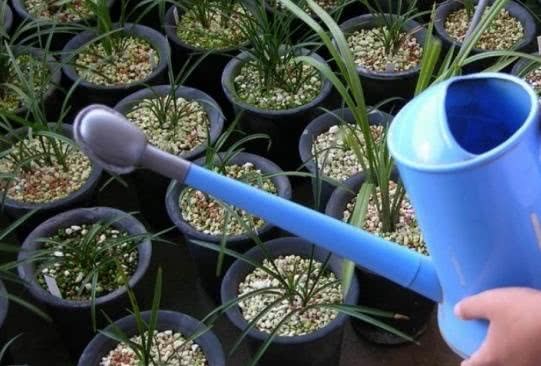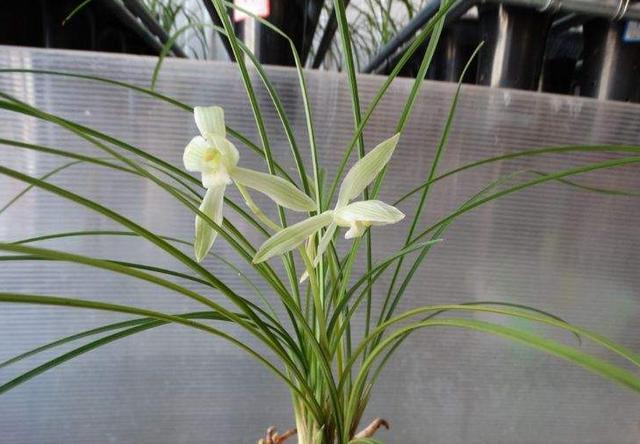It is difficult to water orchids for 10 years. The key to watering orchids is to grasp the following five stages.

There are many discussions on watering orchids, and many famous orchids have different methods. "orchids are easy to raise but hard to water" is an old saying widely spread. Many orchid friends believe that as long as they master the skills of watering, raising orchids will be considered a human race. as sure as a gun. But how to master watering skills? Although the predecessors had many tips, such as "three points wet and seven points dry", "autumn is not dry and winter is not wet", it is more difficult to master in practical application. Because the climatic conditions are different, the family cultivation environment is different, the pots and plant materials used by each person are different, and the varieties of orchids are different, so the water storage capacity, water retention capacity and water evaporation capacity in the orchid basin are also different. this brings a great problem to the watering of orchids. Most people are afraid that more watering will cause rotten roots and dead seedlings, so they water as little as possible in the tradition of "dry orchid and wet chrysanthemum," but once the water supply is insufficient, it is bound to be undernourished, resulting in poor growth and poor quality. Therefore, I think the most important thing in watering orchids is to differ according to their own orchid environment and the types of plants and orchids used.
The general principle of watering is that "when the plant material is dry, it will be fully watered." When the culture soil is dry, leave it for another day to make the plant more dry before watering. When watering, wash the leaves first, and then water back and forth to fully water the plant, so that the excess water flows out from the bottom of the basin, change the air in the basin, and avoid keeping the plant in a moist state.
Watering orchids
The key is to grasp the following five stages:
1. Upper pelvic period. The new potted orchids are fully watered and then drenched every 5-7 days. After cultivation, before the new root is fully elongated, slightly control the watering to make it a little thirsty. On the one hand, there are some scars on the roots of newly planted orchids, and controlling watering to facilitate scab formation of the wound can effectively prevent bacterial infection; second, in order to survive, plants instinctively send out new roots to get water.
With fine and sufficient water, when the residual root system is enough, the orchid plant will sit and eat safely and is very reluctant to take root. Therefore, it is said that dry roots and wet leaves.
2. The period of leaf bud germination. From the leaf bud exposed to the surface of the matrix to the leaf opening a small trumpet. During this period, nutrients are basically provided by the mother plant and do not need too much external supply. If the mother plant is strong, although the leaf bud is delicate and tender, it is also the most vibrant. There is a slow period when the leaf bud is 3-5 cm from the surface of the substrate to the time when the trumpet mouth is about to be opened. at this time, the mother plant itself turns into the differentiation of flower primordium, the supply of new buds decreases sharply, and the buds begin to take root (rooting for the first time) to meet their own growth needs. At this time, the water can be cut off for 5-7 days to make it dry, and then normal management. If phosphate fertilizer can be applied after water cut off, it can promote the differentiation of flower primordium of mother plant and promote the rooting of orchid seedlings. If the root system grows early and develops quickly, the future management will get twice the result with half the effort.
Watering orchids
3. The leaf buds elongate to the stage of leaf development. This period is the key period to determine the width, thickness, strength and weakness of orchid leaves, which determines the quality of orchids. Its nutritional demand will increase day by day (usually when orchids begin to fertilize, all nutrients must be dissolved in the ionic state of water before they can be absorbed by plants). At this time, when the temperature is getting higher and the light is getting stronger, from April to May, the growers often spray water spray to increase humidity because of high temperature, strong light, fast evaporation of water and insufficient air humidity, but it is also easy to cause excessive water to stain tender buds. Even rotten buds. Therefore, whenever spraying water, drenched with water should strengthen ventilation, keep the leaves dry within an hour, let it dry and wet, dry and wet clearly, do not always keep the basin soil in a wet state. Wet and dry, healthy and healthy.
4. When the new buds grow to seven or eight minutes of wood, the second rooting period is ushered in. That is, the body of the new seedling is about the same size as the mother plant, but when the bulb has not yet formed (about autumn), when the water is cut off again for 5-7 days, the orchid plant will put the second root again, and after the water is cut off, it will be treated with high phosphorus and potassium fertilizer to promote root, knot and bud point. This phosphorus and potassium fertilizer is related to the quality of orchids and the germination of buds in the following year.
Watering orchids
5. Two small and clever doors:
(1) if it is found that the new bud has opened leaves without roots, remove the aquatic plants or remove the mulch, remove the bulb dirt and upper plant, let the corm and plant hang about 2-3 cm, then manage normally (including watering fertilizer), and then return to the plant about two weeks later, it can promote its root.
(2) after autumn (about September-October), most orchids are putting their roots for the second time. They can pinch a ball of water moss and wring out about the size of the thumb, pluck the plant material away, tuck it directly under the taro (when the root grows, you will encounter it), and then cover it back. Later watering, fertilization, medicine, water moss will be absorbed, the use of root wettability, it is very helpful to release the root, and the root grows out of the root tip will not be black.
- Prev

The post-80s couple renting an old house of 500 square meters on the island will be the envy of everyone who leads a dull life.
Dense high-rise buildings, endless flow of vehicles, in which, only feel that the whole life seems to be submerged! If you have lived in such a city for too long, have you ever wanted to live another simple and natural life? Small.
- Next

A brief discussion on the cultivation Technology of Yunnan Orchid Flower the shaded orchid unearthed from the bud
Friends often ask: why do the vegetarian flowers in Yunnan orchids have different degrees of whiteness in different places, different families and different periods of time? Is this the breed factor? Or the cultivation factor? In my opinion, according to my experience,.
Related
- Wuhan Hospital Iron Tree Blooming Result Was Instantly Frightened by the Gardener Master
- Which variety of camellia is the most fragrant and best? Which one do you like best?
- What is the small blue coat, the breeding methods and matters needing attention of the succulent plant
- Dormancy time and maintenance management of succulent plants during dormancy
- Minas succulent how to raise, Minas succulent plant pictures
- What are the varieties of winter succulent plants
- How to raise succulent plants in twelve rolls? let's take a look at some experience of breeding twelve rolls.
- Attention should be paid to water control for succulent plants during dormant period (winter and summer)
- Watering experience of twelve rolls of succulent plants
- Techniques for fertilizing succulent plants. An article will let you know how to fertilize succulent plants.

